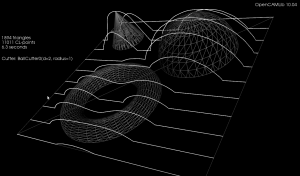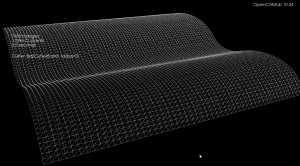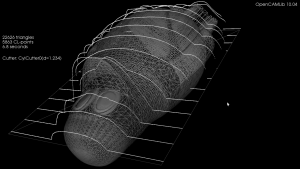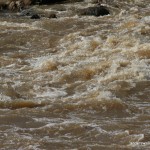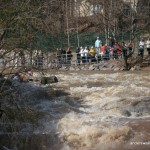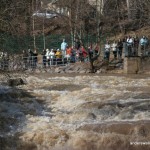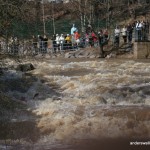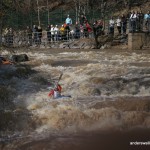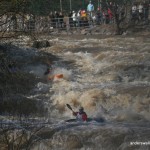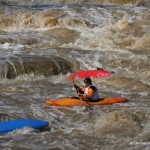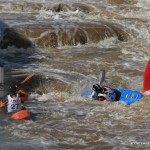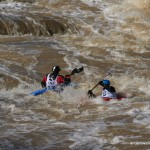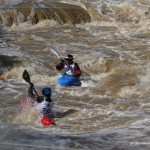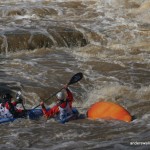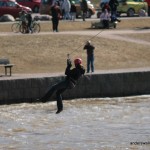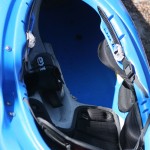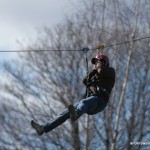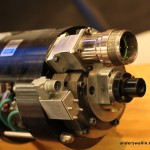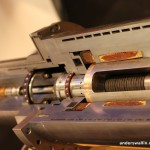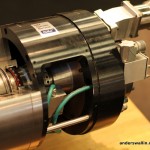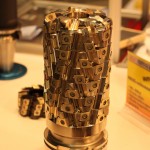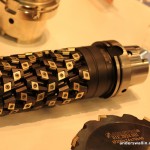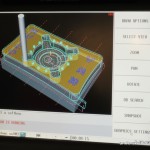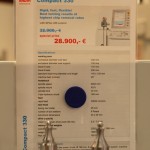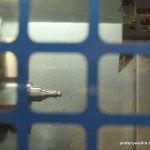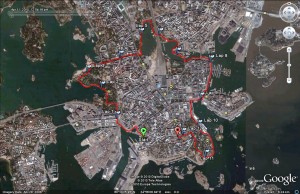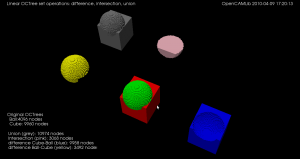No running last weekend due to a Removal of Wisdom (teeth) operation. Something like 2:20 now seems like a more realistic goal for the half-marathon in two weeks.
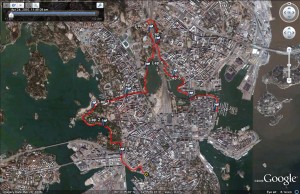
Author: admin
Model Expo 2010 setup
It's time for this years Model Expo in the Helsinki convention center. We set up some boats yesterday and will have Micro Magic, IOM, 5.5mrc, and as a new thing for this year 1:10RC-boats on display. The big 1:10 boats (behind the table against the wall) are built by a local enthusiast fairly accurately to scale, length ca 140cm, weight 10kg, with pretty big/sturdy fittings by modern racing radiosailing-standards.
MicroMagic sailing in the pool will be the main radio-sailing attraction as usual.
Links - 2010 Apr 22
Drop-Cutter examples
I've experimented with using OpenMP to calculate drop-cutter toolpaths on a quad-core machine. These now run reasonably fast. There are obvious lurking bugs with BallCutter and BullCutter still...
Code is here: code.google.com/p/opencamlib/ (if you know C++, computational geometry, and cnc-machining, or are willing to learn, this project needs your help!)
See also: styrofoam spider
iceBREAK
FinnTEC 2010
FinnTEC fills the Helsinki convention center every two years with manufacturing technology and related stuff. I couldn't find anything too revolutionary, a lot of 4- or 5-axis machining centers running programs where they didn't machine anything, just hovered the tool above the workpiece. The 3D printers which print ABS-plastic are becoming more common. The price for one I looked at was 13 keur, not too bad.
See also FinnTEC 2008
Links - 2010 Apr 15
- LEGO Sequential Gearbox (7+R) on a Bugatti Veyron 16.4 -
- The Most Important iPad Question Of The Day -
- Pinhole camera image of the Sun’s path -
- Amazing Card Throwing -
- This is not a spiral -
- On that viral video from Baghdad -
- 40 yard dash: average dude vs pro athlete -
- 10 Things You Should Know About J.R.R. Tolkien -
- Best photo caption ever -
- April Fools: Math Class Shadow -
- 30 inimitable carpets/rugs that you won't want to step on! -
- Hubble IMAX 3D at the Science Museum, London -
- Hell = Flash -
- 5-Axis Robot Carves Metal Like Butter -
- Word of the week: awaylable -
- Impressive New Hubble Image of Odd Galaxy Triplet -
- Yoctonewton Detector Smashes Force Sensing Record -
- Will It Blend? – iPad, sekoittuuko? -
5k
Sunday 12k
Slow 12k today. Felt fine until about km 7 or 8, then it was more work to get home. I should learn to eat and drink better during the run since takes more than one hour.
Only three weekends, four weeks, until the planned half-marathon. I'll try to do 14k next week, then 16k two weeks before the event, but then probably ease off the week before the half-marathon, which is 21097.5 m long.
Through "micke-midlife's" blog I found a new Finnish running site last week, www.42195.fi
Cutting down the octree
If you number the octants in an octree using a 1982 scheme called Gargantini-code, and store the codes for only the black nodes in the tree in a list then that's called a linear octree.
For quadtrees, there is a 1985 paper by Bauer with an algorithm for computing set-operations (intersection, union, difference) between two trees. Ten years later Jiang corrected a few mistakes and extended this algorithm to octrees. Neither paper is free of misprints, but by looking at both I seem to have arrived at set-operations which work.
Pushing lists with 10 000 or more elements back and forth between C++ and python is not very fast, and I'm now rendering each node (a cube) in a tree as a separate Cube-object in VTK, which isn't very efficient. The video shows depth 6 trees at the end, and here's a screen-capture of a depth 7 tree:
This could be useful for making a cutting-simulator used for both verifying CAM-algorithms in opencamlib, and G-code produced by other programs. It's probably possible to hook into the EMC2interpreter and have it drive the tool in the simulation.

